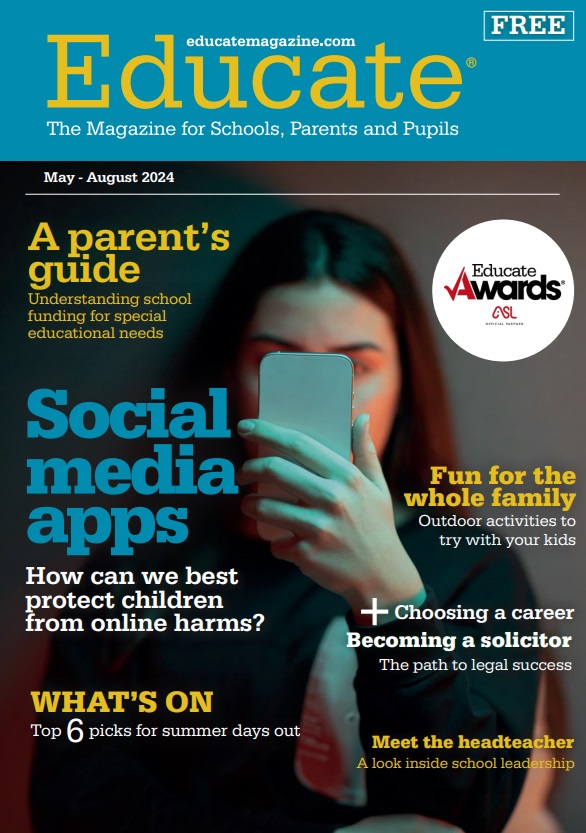The Power of Storytelling

With the arts being squeezed in mainstream education and the pandemic impacting live theatre, Hannah Fowler explores the art of storytelling in schools and whether using stories can create a happily ever after for students’ learning.
The power of stories has been recognised for centuries. Dating back thousands of years, every culture and country has their own oral traditions which entertain, educate and teach important life lessons.
We are addicted to stories. Think about it, even when we go to sleep, the mind stays up all night telling itself stories in our dreams.
The Society for Storytelling defines it as the act of sharing, “not just the sharing of words and plot, but the sharing of emotions and experiences. It involves a direct coming together of the teller and the listener, with no barrier of text.”
“Storytelling in the classroom can enable ways into challenging subjects like bereavement, loss, change, jealousy, love and discrimination,” explains Lucy Cuthbertson, co-director of Education at Shakespeare’s Globe. “It can give children agency over the story and issues by allowing them to interact with and contribute to the story and dialogue.”
Lucy oversees all learning and family activities at the world-renowned performing arts venue in London. It’s storytelling events weave Shakespearean and contemporary text with interactive elements to help children explore the plot, characters and ideas. The storytelling format also allows children to contribute and explore complex issues in an age appropriate way.
“Our story of Romeo and Juliet invites children throughout the story to consider what alternative choices the characters could have made, how they could have walked away from violence or found an alternative to suicide – how this is not a romantic choice,” Lucy explains.

“Their contributions always give me hope for the future. If these shows sound rather heavy, they’re not – that would be no way to engage children – they contain so much fun, laughter and comedy.”
Storytelling has also been a powerful tool to help children process the COVID-19 crisis. Although face-to-face performances had to stop at the height of the pandemic, The Globe hosted live, interactive performances online and developed school workshops which students could access from home.
During a storytelling performance of The Winter’s Tale, Lucy recalls a poignant moment where children got to ask their own questions to Apollo’s Oracle – “when will lockdown end?”, “when will the virus disappear?”, “When can I see my family again?” they asked.
Once upon a time, before classroom technology advanced, teachers simply shared their knowledge through stories, and it’s a tradition that has continued to live on.
“Stories must be part of everyday practice in the classroom,” says Chantal Loiseau, creative director of Teeny Tiny Theatre in South Liverpool. “They open up the world for children allowing them to experience new ideas, people and places all from their spot on the carpet or behind their desk. They help us understand and interpret the world around us and develop language, imagination and empathy. It is vital they are integrated into the curriculum.”
But is it really the most powerful tool of all? Psychologist Peg Neuhauser found that learning which stems from stories are remembered more accurately, and for much longer, than learning derived from facts and figures. Other research has found that stories engage our thinking, our emotions, and can lead to the creation of mental imagery.
The economic value of storytelling was put to the test in the Significant Objects experiment. Creative writers invented stories about cheap items on eBay, worth collectively at $100, to see if the stories enhanced the value of the objects. The result? The net profit was $3.6 million, a 2,700 percent increase in their original value.
This experiment proves that we, as humans, are drawn to stories.
Storytelling is as powerful as it comes for Chris Smith. So much so that he started Storytelling Schools with co-founder Adam Guillain. As a storyteller and writer, Chris knew teachers loved learning the storytelling but there was a problem integrating it as a whole school approach. “That’s why we started doing research into how to systematically use a storytelling method for whole school learning,” explains Chris.

“After three years of research, with three pilot projects in various settings, we came up with a practical, tried-and tested method. The Storytelling Schools method is a whole school approach which uses the telling of a story or non-fiction presentation as the springboard for learning. In this way teachers learn to inspire, engage and motivate through storytelling while students have fun mastering language and ideas.”
Storytelling Schools has worked with over 240 schools nationwide and has reached approximately 2,000 teachers and 60,000 pupils in England, many in areas of socio-economic deprivation.
Pupils are encouraged to learn through natural, improvised language, rather than memorising texts word for word, and become the storytellers themselves, retelling stories and presentations they have heard. This helps students build comprehension and confidence in their own communication skills and as Chris puts it, helps to “find their own voice”.
The evidence speaks for itself. After completion of the Storytelling Schools pilot project, one Birmingham primary school saw 100% of disadvantaged pupils meeting national expectations in writing, compared to 66% nationally.
Disadvantaged pupils outperformed their peers by 18%, 100% of pupils made expected progress and 100% of disadvantaged pupils made accelerated progress. The school has since been awarded Outstanding by Ofsted.
The rise in technology has made it even easier to integrate storytelling in to teaching. Digital storytelling blends the ancient art with a range contemporary tools, such as images and music.
When schools closed during the COVID-19 pandemic, technology was the only lifeline for many schools and organisations who previously relied on the live aspect of theatre and storytelling.
“There is undoubtedly a place for digital theatre and the pandemic has pushed all of us to explore that further,” says Laura Hennessy from Teeny Tiny Theatre. “It has value and provides new opportunities both artistically and in terms of how it can broaden reach. It isn’t going anywhere. However, there is no substitute for live theatre. You can’t replace that feeling of being ‘in the room’ with performers.”
Lucy agrees and says The Globe has seen a huge appetite for live performance post-lockdown. “The lockdown made us appreciate things we had always taken for granted and that suddenly got taken away, such as the fundamental importance of congregation, the buzz of being in an audience, sharing a live event,” she explains.
Set-up by Chantal in 2017, Teeny Tiny Theatre is a pop-up venue and children’s theatre company hosting small-scale theatre for family audiences and offering an exciting programme of interactive drama and creative play workshops. Laura joined the company in 2019 to expand its education and outreach offer.

As former drama secondary school teachers, Chantal and Laura are passionate about helping children access theatre performances from a young age.
“Many of the families that visit our productions have never taken their children to a performance before; it was too far away, too intimidating, too expensive or just not for them. Being able to access theatre in their local community has changed these attitudes,” explains Chantal.
As we emerge from the social isolation of the pandemic, Chantal and Laura believe these “unique, creative and social experiences” are more needed than ever. “In our creative play classes, we aim to bring the world of story books to life using imaginary play, games and songs,” adds Laura.
“We love devising ways to play with the events and ideas in story books using drama techniques like role-play and mime and seeing children inspired to then look at the pictures and listen more intently when we read these to them aloud.”
It’s no wonder that storytelling, drama and live theatre go hand in hand. Creativity is at the heart of all these subjects. But to equate storytelling, drama and in fact any of the arts subjects to simply teaching creativity would be doing them an injustice.
Decision making, confidence, tolerance, communication and collaboration are just some of the skills learnt by students, which are vital to help them navigate the wider world. Despite this, news headlines constantly remind us of the decline in arts education, particularly in state schools.
Lucy cites the latest GCSE entries which show that the number of students taking drama has seen a 30% decline since 2010. A recent report suggested that A-level music will disappear within the decade. “The offer of a broad and balanced curriculum, with a proper offer of arts subjects, has been the preserve of independent schools and the gulf in opportunity continues to widen,” explains Lucy.
“Some state schools have a brilliant arts offer – it is possible; it’s a choice they have made because they fully understand the vital part those subjects play in an all-round education and in students’ sense of wellbeing.”
“Sadly, because of the pressure on schools in terms of expectations for inspection and attainment, the arts and creativity can often be pushed to the margins or ‘crowbarred’ in to a tick box rather than be considered central to a thriving curriculum and school,” adds Laura.
Chris argues that this raises questions of education’s true purpose: “What is education for? Some point to character building, some look to economics and others focus on the gateway to success through exams,” he explains.
“A lot depends on priorities and assumptions behind a policy. In our method the creative arts are integrated into a broader learning goal. The arts are not taught as a separate add-on but part of the wider scheme. This allows a school to focus on priorities like literacy while using the arts to help raise those standards.”
With a new academic term rolling in and COVID catch up still the trending story in education, the post-pandemic recovery is not without its challenges. Integrating storytelling, drama and live theatre in to the curriculum can seem like a risky strategy, but the rewards can be so great.
“Trust the imagination of children,” says Lucy. “They are natural storytellers themselves, it’s a form they instinctively understand and excel at.”



